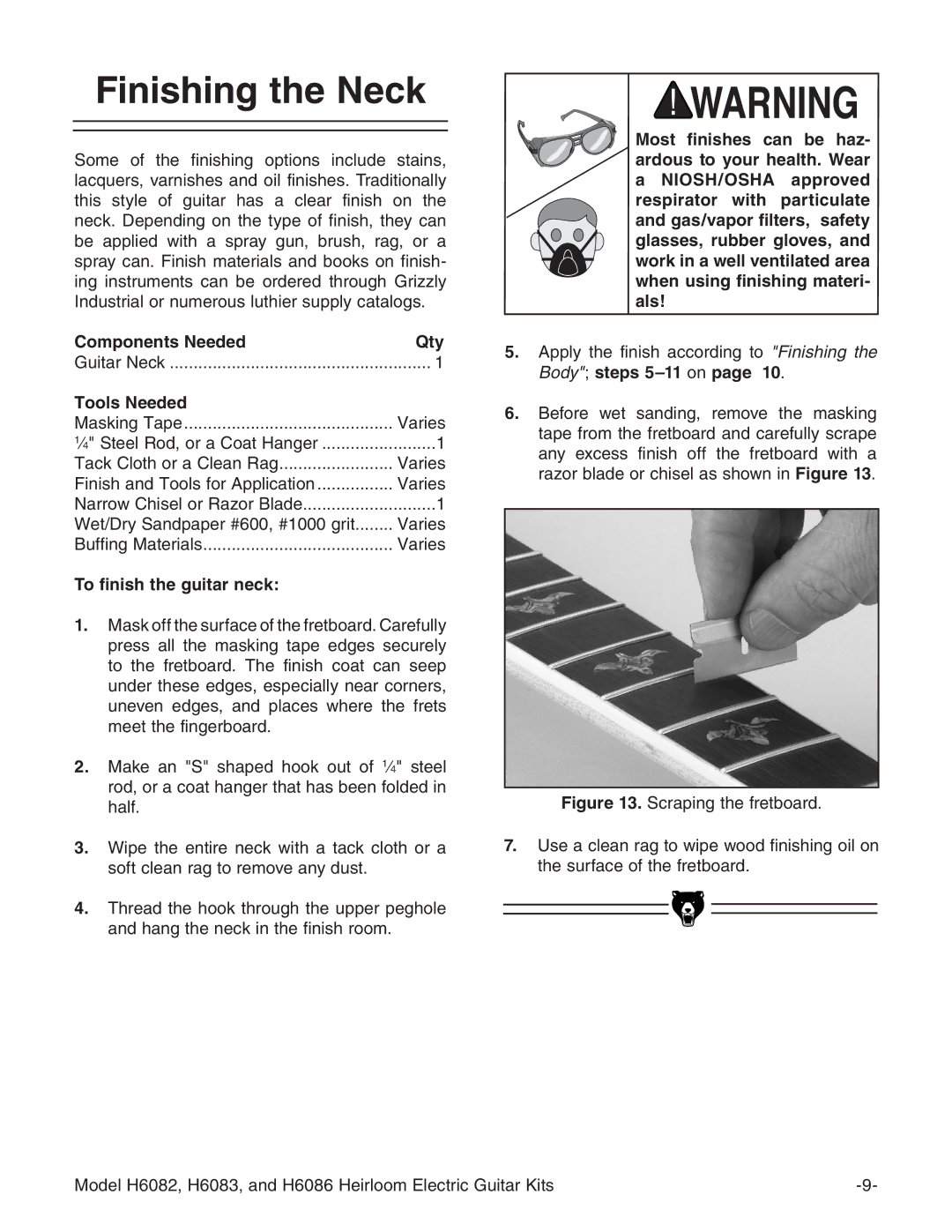
Finishing the Neck
Some of the finishing options include stains, lacquers, varnishes and oil finishes. Traditionally this style of guitar has a clear finish on the neck. Depending on the type of finish, they can be applied with a spray gun, brush, rag, or a spray can. Finish materials and books on finish- ing instruments can be ordered through Grizzly Industrial or numerous luthier supply catalogs.
Components Needed | Qty |
Guitar Neck | 1 |
Tools Needed |
|
Masking Tape | Varies |
1⁄4" Steel Rod, or a Coat Hanger | 1 |
Tack Cloth or a Clean Rag | Varies |
Finish and Tools for Application | Varies |
Narrow Chisel or Razor Blade | 1 |
Wet/Dry Sandpaper #600, #1000 grit | Varies |
Buffing Materials | Varies |
To finish the guitar neck: |
|
1. |
|
Most finishes can be haz- ardous to your health. Wear a NIOSH/OSHA approved respirator with particulate and gas/vapor filters, safety glasses, rubber gloves, and work in a well ventilated area when using finishing materi- als!
5.Apply the finish according to "Finishing the Body"; steps
6.Before wet sanding, remove the masking tape from the fretboard and carefully scrape any excess finish off the fretboard with a razor blade or chisel as shown in Figure 13.
2.Make an "S" shaped hook out of 1⁄4" steel rod, or a coat hanger that has been folded in half.
3.Wipe the entire neck with a tack cloth or a soft clean rag to remove any dust.
4.Thread the hook through the upper peghole and hang the neck in the finish room.
Figure 13. Scraping the fretboard.
7.Use a clean rag to wipe wood finishing oil on the surface of the fretboard.
Model H6082, H6083, and H6086 Heirloom Electric Guitar Kits |
